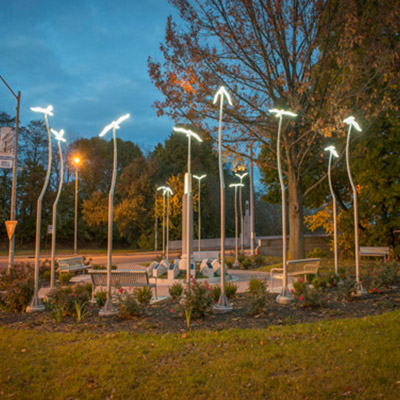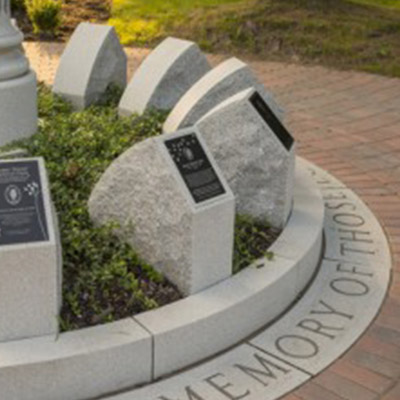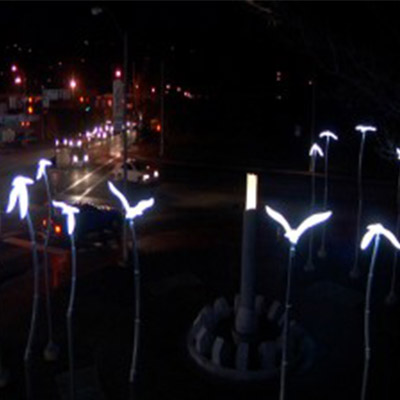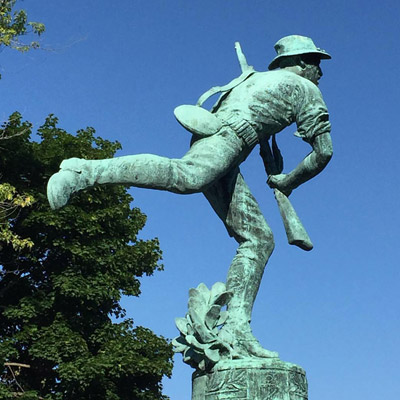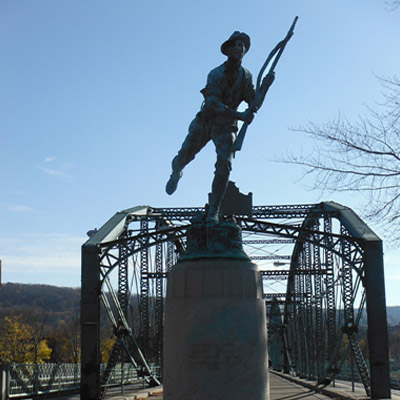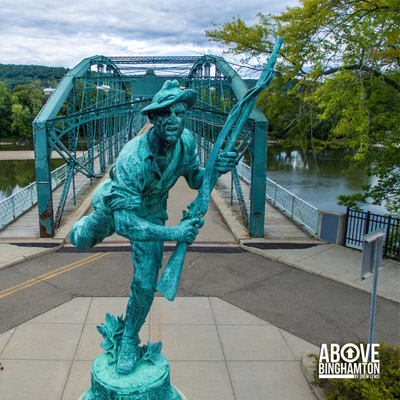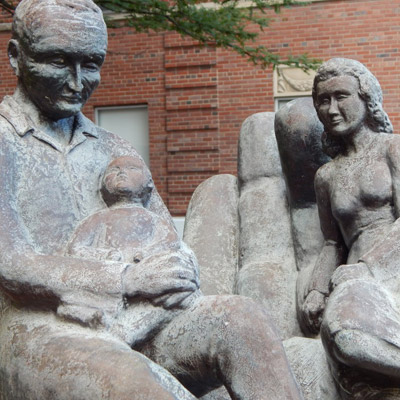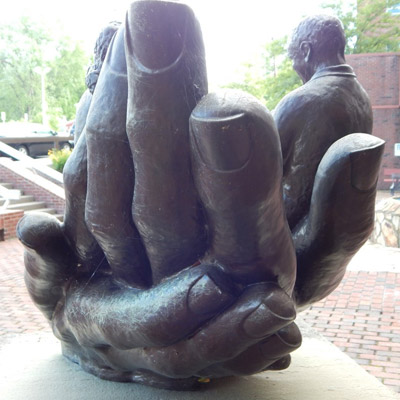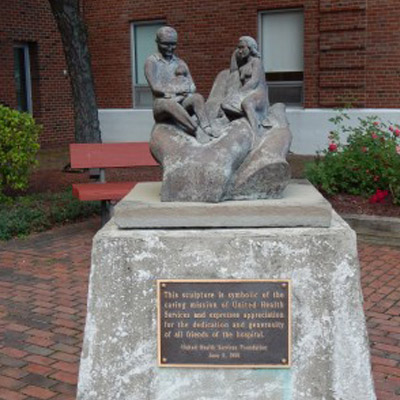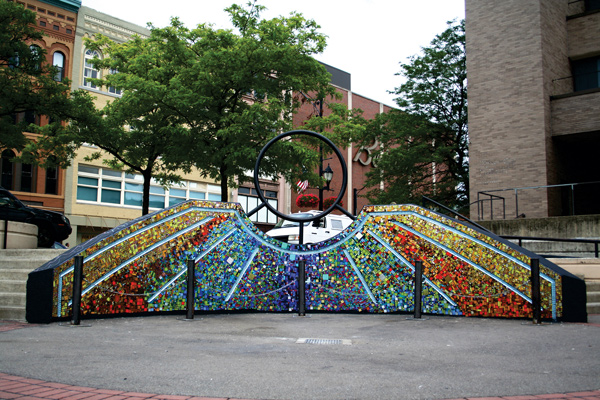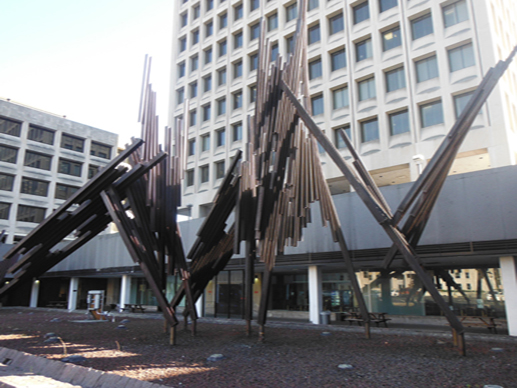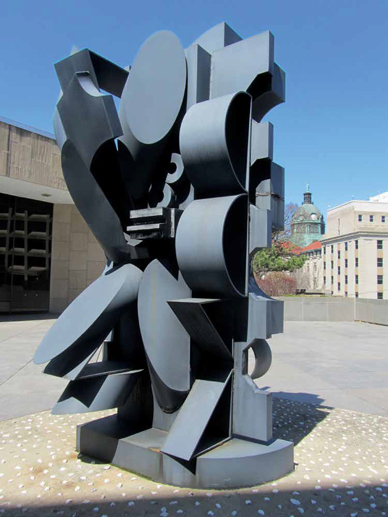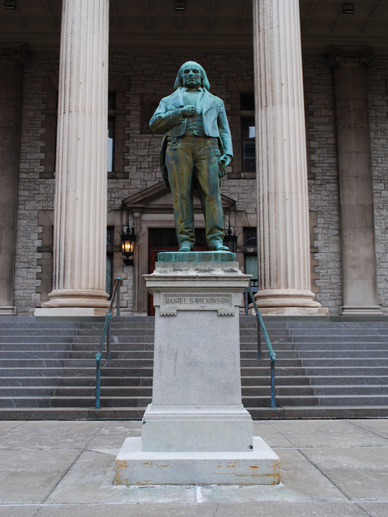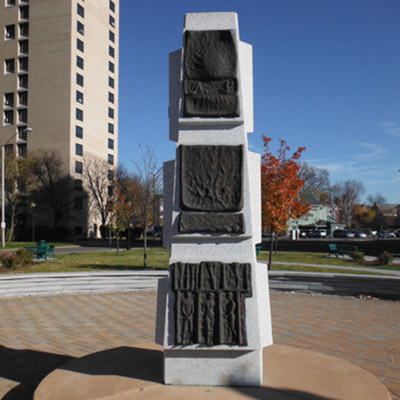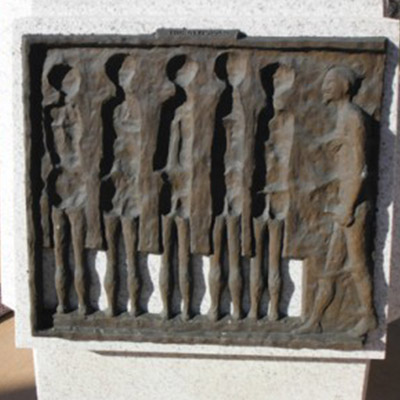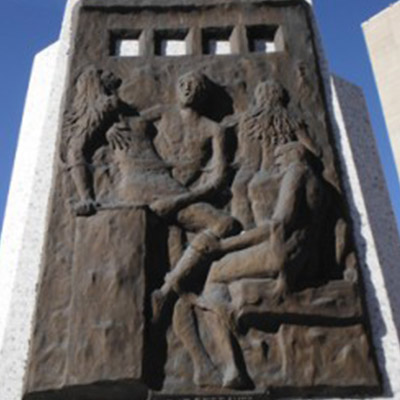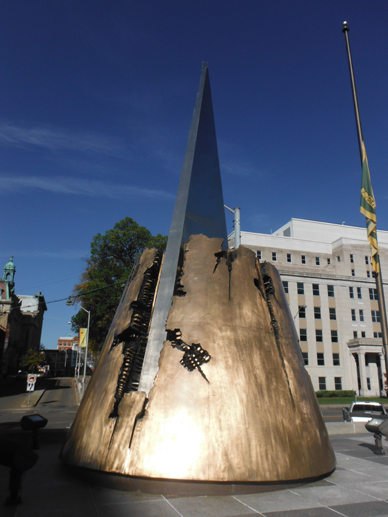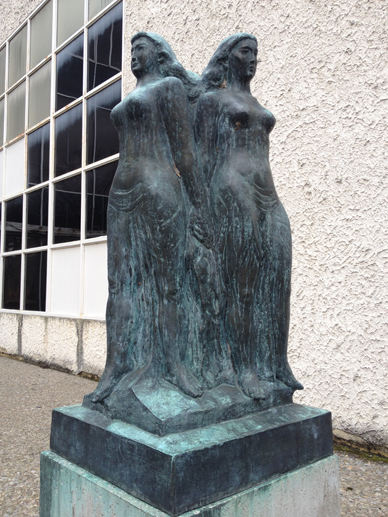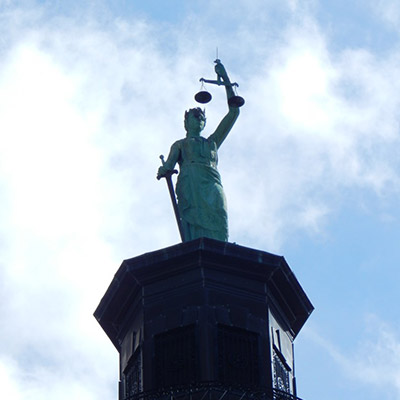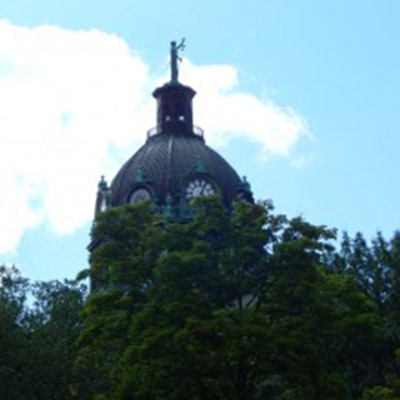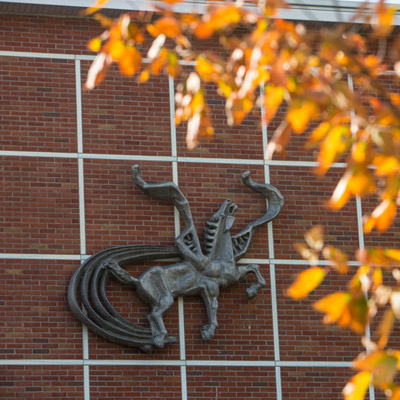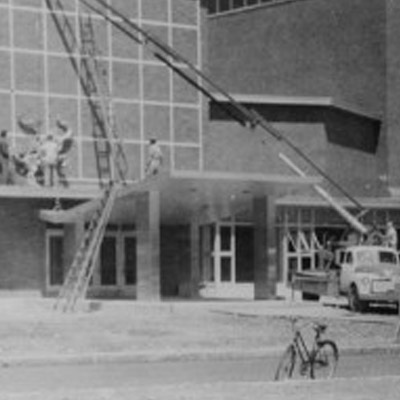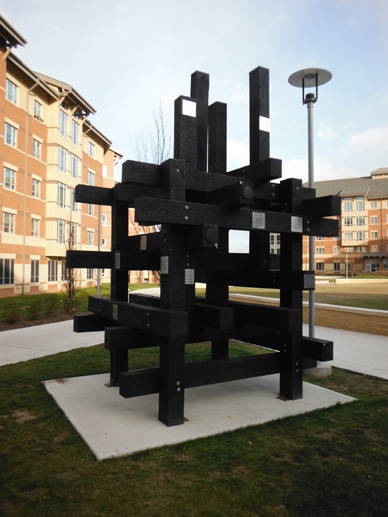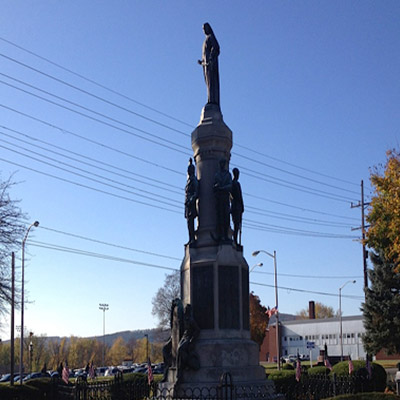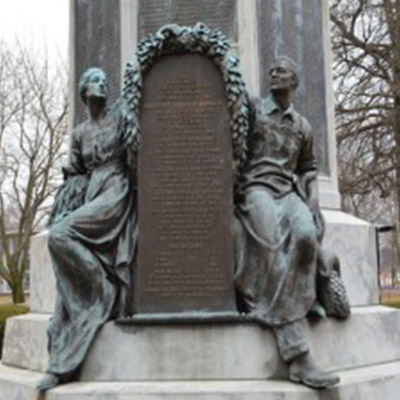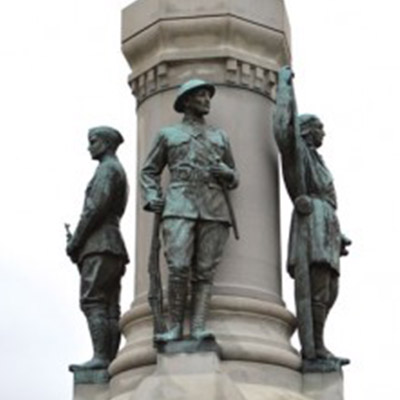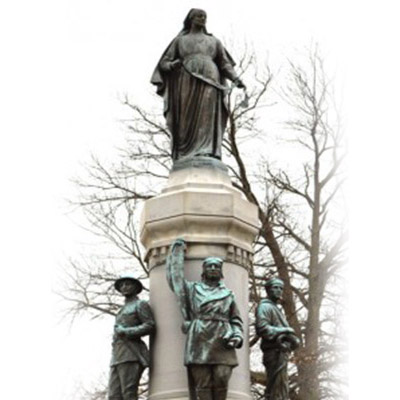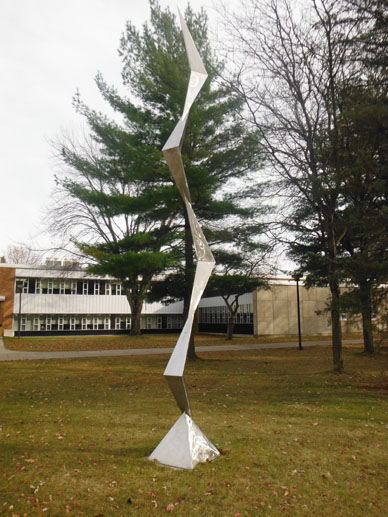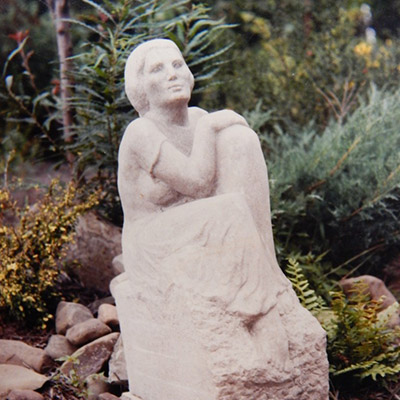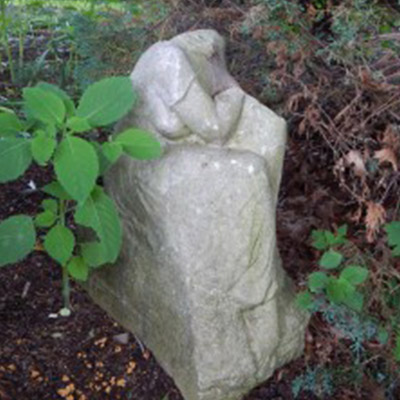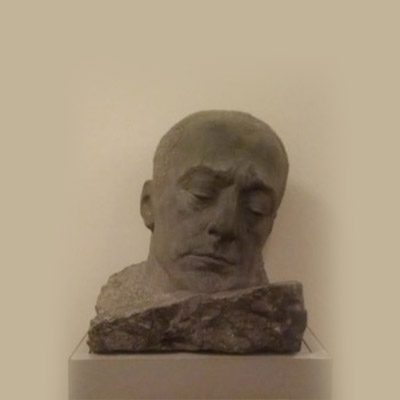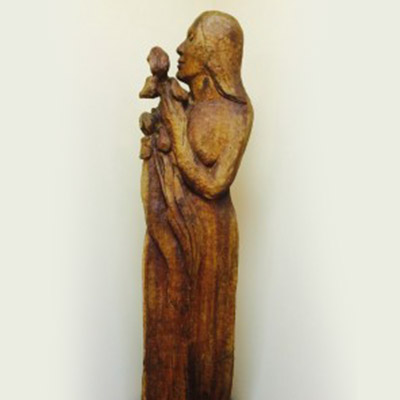Reviewed by David L. Schriber
Binghamton University Symphony Orchestra Director Timothy Perry enjoys putting together programs of American music. The concert last Saturday (Dec. 4) at BU’s Anderson Center focused on the narrow period of 1930-1955 with works of Aaron Copland, Samuel Barber, Morton Gould, Leonard Bernstein and George Gershwin. Perry delivers his program notes in person, not leaving the audience to attempt to read printed notes in the dark. In doing so he can be more complete in his remarks. One always comes away having learned something not only about the music but about the historical and cultural context in which it was set.
Opening the program was Copland’s “Buckaroo Holiday” (1942), reflecting the composer’s abandoning of atonal music in favor of folk tunes – strong, quirky, unbeholden to the old continent. In this soundscape of the American West, the trumpet and trombone soloists donned 10-gallon hats for their featured parts.
Samuel Barber’s “Adagio for Strings” (1938) has become, said Perry, a sort of national anthem of communal sorrow. Played at the funerals of FDR, Albert Einstein and Princess Grace and the 9/11 memorials, the piece was voted in 2004 by BBC listeners the saddest piece of music ever written. Student conductor Heather Worden successfully avoided the pitfall of building the dynamics too quickly. Unfortunately at its zenith, the orchestra never reached the intensity of pathos needed to bring the emotional catharsis we are used to feeling from this piece.
Gould’s “Second American Symphonette” (1939) reflected the influence of the migration of African American jazz from the South. The piece featured playful passages for clarinet, trumpet and flute and exercised the orchestra through a spectrum of tempi and dynamics.
Music funded by the WPA Federal Music Project during the Great Depression conformed to the political expectation that the music be uplifting and optimistic. This was no longer the case after World War II, and Leonard Bernstein’s music for the film On the Waterfront (1955) painted a darker side of life, with themes of isolation amidst the crowd and random urban violence. Student conductor Zachary Nobile Kampler conducted the “Allegro Barbaro” movement crisply, directing the marcato percussion with gunshot precision.
Perry saved the earliest piece on the program, an overture no less, for last. George Gershwin’s “Cuban Overture” (1935) showed an America reaching beyond its own borders to embrace Latin rhythms, though one could also hear an echo of his “An American in Paris.” Members of the percussion section got to show their skills with marimba (or was it xylophone?), blocks, maracas and conga drum.
The audience of about 600 enjoyed this well-rounded selection of music from iconic American composers. The program demonstrated the orchestra’s versatility while showcasing a number of instruments in the 78-member ensemble.


